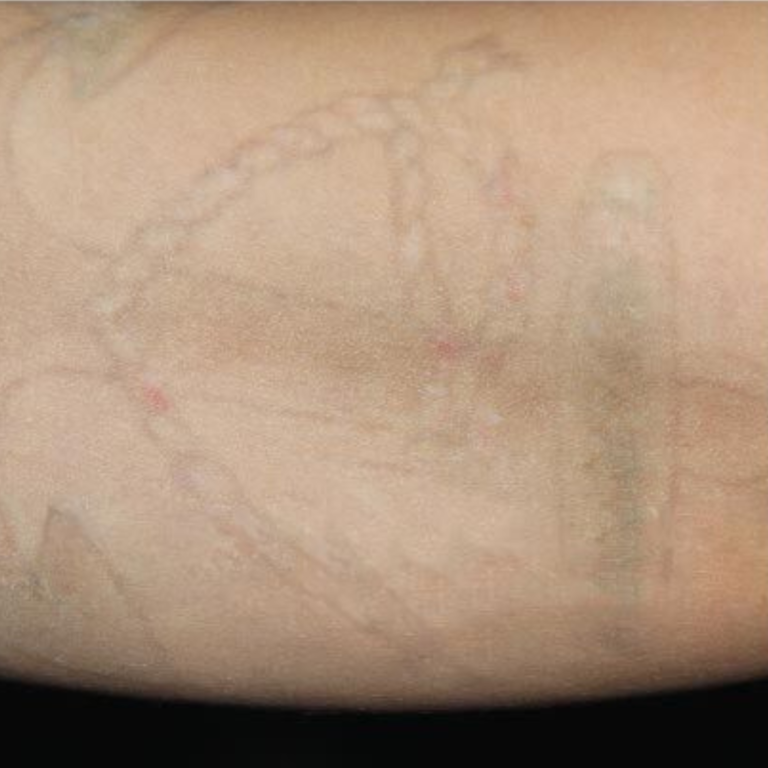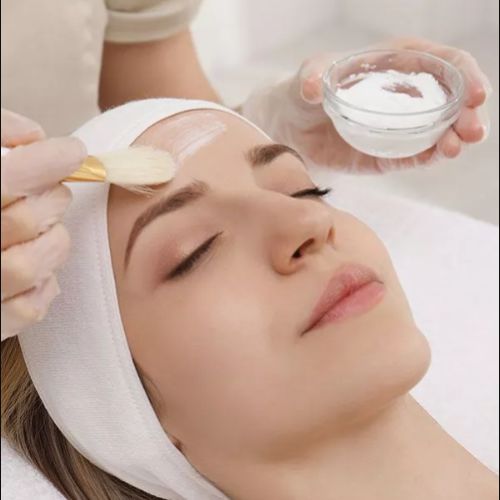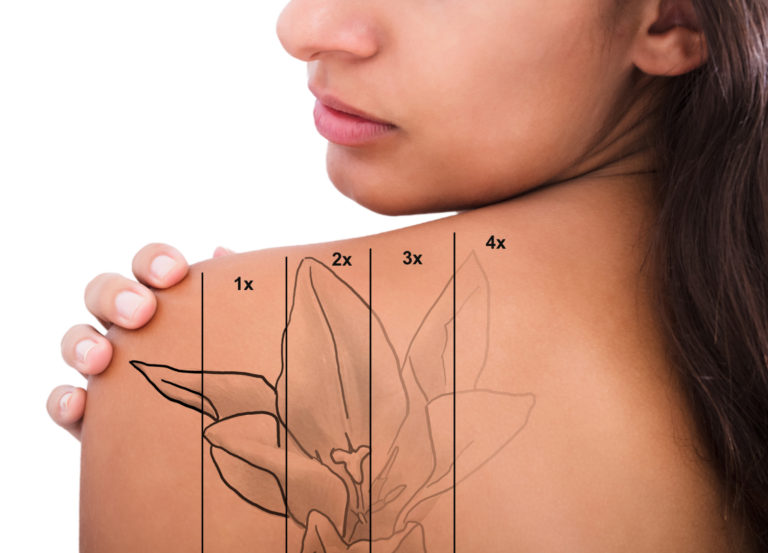
Our Knowledge. Your Tattoo.
Fading away for a cover up tattoo or new artwork
Looking to breathe new life into an existing tattoo or create a fresh masterpiece? Our Laser Tattoo Fading and Coverup services gently fades tattoos, providing a clean canvas for your next artistic expression. This precise process ensures minimal impact on surrounding skin, allowing for seamless coverup designs. We will work closely with you to achieve the desired level of fading or modification for a seamless transition from old to new ink, and let your imagination run wild.
The number of tattoo removal sessions required for a cover-up tattoo can vary widely depending on several factors:
Tattoo Size: Larger tattoos typically require more sessions than smaller ones.
Ink Color: The type and colors of ink used in the existing tattoo can affect removal. Darker colors like black are generally easier to remove than vibrant or multi-colored tattoos.
Tattoo Depth: Tattoos that were applied deeper into the skin may require more sessions to fully fade.
Skin Type: Skin type can influence the removal process. Lighter skin tones often respond more favorably to tattoo removal treatments.
Age of the Tattoo: Older tattoos may be easier to remove than fresher ones because the ink may have started to break down naturally over time.
Tattoo Professionalism: The quality of the original tattoo and the professionalism of the tattoo artist can impact removal. Professionally applied tattoos may be more challenging to remove due to the quality of ink used.
Tattoo Removal Technology: The type of laser or removal method used can also affect the number of sessions required. PicoSure and other advanced laser technologies may require fewer sessions than older methods.
On average, it can take anywhere from 5 to 15 or more tattoo removal sessions to significantly fade or remove a tattoo, depending on the factors mentioned above. Each session is typically scheduled several weeks apart to allow the skin to heal between treatments.
For a cover-up tattoo, the goal may not be complete removal but rather fading the original tattoo enough to allow the new design to effectively cover it. Your tattoo removal specialist will assess your specific situation and provide an estimate of the number of sessions required for your cover-up tattoo. Keep in mind that complete removal may not always be possible, but significant fading can often be achieved to make way for new artwork.
We like to work with your tattoo artist. Regular checkups with your artist after each tattoo removal session will help to see how many more you may need before they can start your new tattoo.
The timing for starting a cover-up tattoo after the fading of the previous tattoo can vary depending on several factors, including the individual’s skin healing process, the extent of fading, and the advice of a tattoo artist or dermatologist. However, here are some general guidelines:
Healing Period: After tattoo removal or fading sessions, it’s crucial to allow your skin to heal fully. This typically takes several weeks to a few months, depending on the individual and the extent of fading. Follow the aftercare instructions provided by your tattoo removal specialist.
Consult with a Tattoo Artist: Before starting a cover-up tattoo, consult with a professional tattoo artist. They can assess your skin’s condition and the residual ink from the previous tattoo. They will provide guidance on the ideal timing for the cover-up, taking into account the health of your skin.
Fading Progress: The extent of fading achieved through tattoo removal sessions will impact the timing for a cover-up. If the previous tattoo is significantly lighter, it may be easier to design and execute the cover-up.
Skin Health: Ensure that your skin is in good health before getting a new tattoo. Avoid sunburn, skin irritations, or any lingering effects of the tattoo removal process.
Artist’s Recommendation: Tattoo artists are experienced in cover-up work and can advise you on when it’s suitable to start the process. They may recommend waiting until the skin is in the best possible condition to ensure the success of the cover-up.
Design Consideration: The design of the cover-up tattoo may also influence the timing. Some cover-ups may require more faded skin, while others may be designed to incorporate the remaining elements of the previous tattoo.
In summary, there is no fixed timeline for starting a cover-up tattoo after fading. It’s essential to consult with a qualified tattoo artist who can assess your specific situation and provide personalized advice based on the condition of your skin and the extent of fading. Taking the time to plan and ensure your skin is in good health will contribute to a successful cover-up tattoo.
Not sure which one to get? Contact Us






